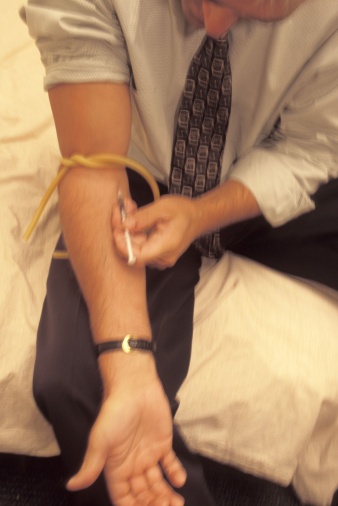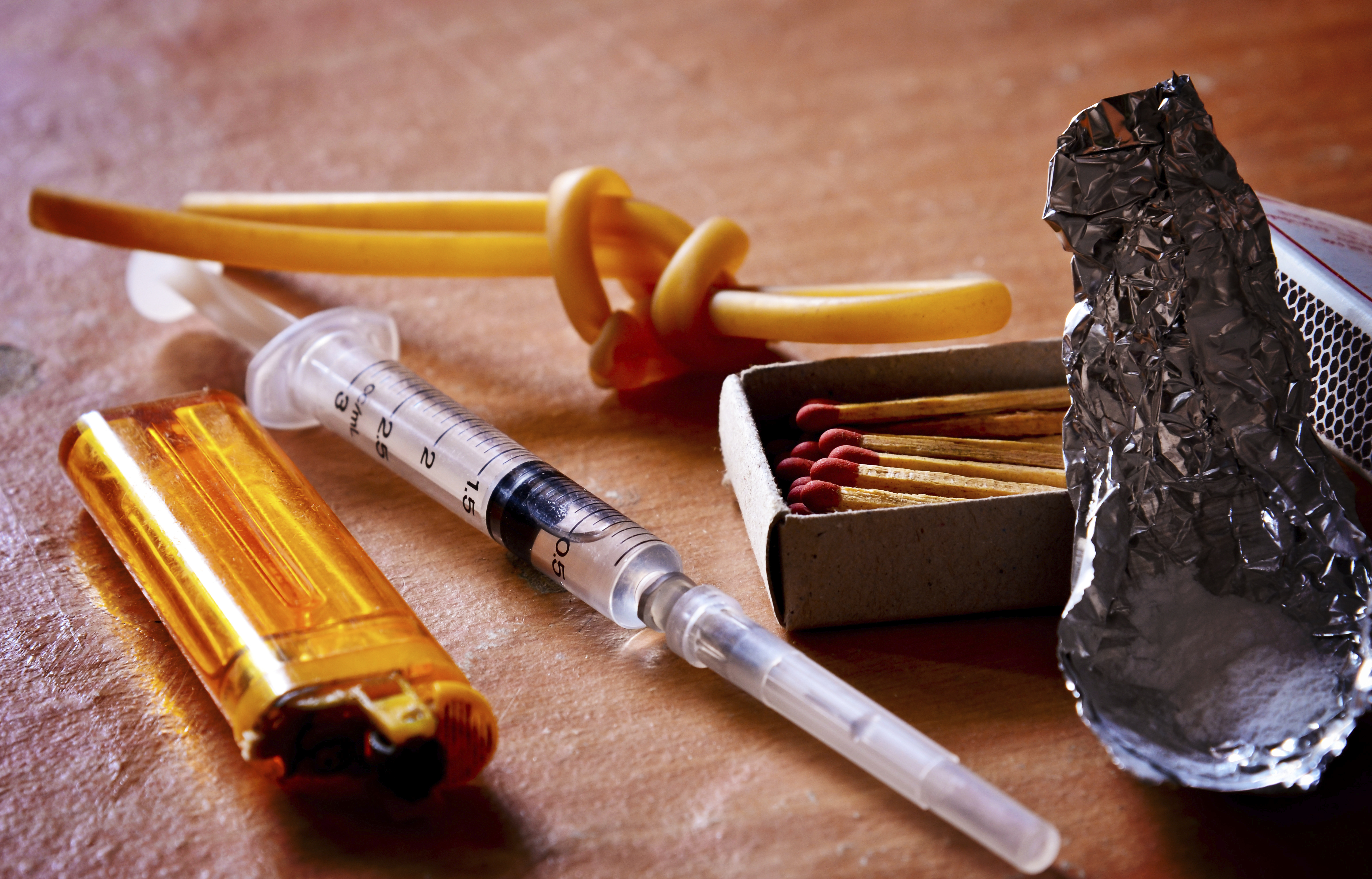In one of the largest and most highly publicized drug busts in New Jersey history, authorities have arrested over 300 people for their connection with North Jersey’s heroin trade. The announcement of the arrests was made at a press conference on June 3. The arrests are the conclusion of a two-month investigation undertaken to curb heroin abuse in the drug-plagued region.[1]
In addition to the arrest of 280 heroin abusers and close to 40 distributors, authorities reported the seizure of 11,794 bags of heroin, 32 guns, approximately 1,200 grams of raw heroin and close to $25,000 in cash. Police also managed to take down two heroin mills in the area. The investigation took aim at the open-air heroin market in Paterson, NJ. Among those rounded up were a soldier, a dental hygienist, a municipal employee and two professional baseball prospects, representing the diverse and all-consuming nature of this problem.[2]
New Jersey’s Ongoing Heroin Problem
 Sadly, these stories of widespread heroin use are not isolated incidents. Heroin has resurfaced, due in large part to the increasing scarcity and expense of illegal prescription painkillers. It is a problem affecting communities, not just in New Jersey, but across the country. Sophisticated prevention and treatment efforts are key to combatting the proliferation of this addiction threat.
Sadly, these stories of widespread heroin use are not isolated incidents. Heroin has resurfaced, due in large part to the increasing scarcity and expense of illegal prescription painkillers. It is a problem affecting communities, not just in New Jersey, but across the country. Sophisticated prevention and treatment efforts are key to combatting the proliferation of this addiction threat.
The most recent statistics available show that heroin claimed the lives of at least 741 people in the Garden State in 2013, and it could’ve been much worse had it not been for the hundreds of lives saved through overdose antidote, Narcan, also known by its generic name, naloxone. The problem has become particularly troubling in South Jersey, earning the distinction of having some of the most potent and cheap heroin available.
In 2014, heroin and opioid admissions accounted for 49 percent of all substance abuse admissions in the state – the highest such number in at least 10 years. The Division of Mental Health and Addiction Services released data showing that more than 28,000 people in the state sought out treatment for heroin and opioids, with heroin accounting for 24,000 of them.
Lack of Treatment Available
Heroin-related deaths have steadily increased in New Jersey since 2010, increasing 160 percent during that time; while the number of people in treatment for heroin or opioids has only increased 15 percent. While the problem of heroin addiction continues to grow, while the amount of help available has not kept up with the pace.
In 2010, the state estimated that 37 percent of the people seeking substance abuse treatment in New Jersey did not receive it. According to federal statistics, New Jersey’s state run substance abuse centers have been near or slightly above capacity for several years. Admissions for heroin and other opiates increased by almost three times from 2006 to 2013, going from 1,354 to 3,951.
There just simply aren’t enough beds for addicts looking to break free of their addictions. The Federal Substance Abuse and Mental Health Services Administration estimated that only one quarter of the 179,000 in New Jersey who abused or were dependent on illicit drugs in 2013 actually received treatment.[3]
Heroin addicts are being forced to sit on waiting lists for several weeks before being admitted for treatment. In that time, an addict could have overdosed, regressed deeper into addiction, or lost the will to seek out help. The demand for available addiction treatment in the state has outpaced its ability to supply it, with the amount of people seeking heroin addiction treatment increasing from 22,750 in 2006, to 33,445 in 2013.
In 2014, heroin and opioid admissions accounted for 49 percent of all substance abuse admissions in the state – the highest such number in at least 10 years.
The New Face of Heroin Addiction: A Troubling National Trend
 Heroin addiction has moved from dark back alleys, poor street corners and underprivileged areas into suburbia. The old stereotypes of junkies sharing heroin needles and heroin addiction being just a plight of the poor is well in the past. Today, heroin addicts are found working in successful careers, living in wealthy neighborhoods and seemingly enjoying a life of luxury. The tragic heroin overdose deaths of wealthy celebrities, Cory Monteith and Phillip Seymour Hoffman, have gone a long way in redefining the new face of heroin addiction.[4]
Heroin addiction has moved from dark back alleys, poor street corners and underprivileged areas into suburbia. The old stereotypes of junkies sharing heroin needles and heroin addiction being just a plight of the poor is well in the past. Today, heroin addicts are found working in successful careers, living in wealthy neighborhoods and seemingly enjoying a life of luxury. The tragic heroin overdose deaths of wealthy celebrities, Cory Monteith and Phillip Seymour Hoffman, have gone a long way in redefining the new face of heroin addiction.[4]
In the 1960s, the typical heroin user was an inner-city teenager who started using heroin as their first opiate. Today, the typical user is a white suburban person in their 20s, who likely began by developing an inadvertent addiction to prescription opiates. After a while, they realize that heroin is cheaper and more easily accessible than prescription drugs, so they turn to heroin.
Prescription opiates are involved in approximately 16,600 deaths per year, compared to about 3,000 deaths annually from heroin. However, former U.S. Attorney General Eric Holder pointed out that heroin overdoses increased 45 percent between 2006 and 2010, terming the situation “an urgent and growing public health crisis.”
What Can Be Done to Stem the Tide?
The first step of prevention is to realize it can happen to you and the people closest to you. Parents should be especially careful in monitoring the use of prescription drugs by their children, as well as over the counter drugs traditionally found in medicine cabinets. These narcotics have proven to be gateways to heroin use, abuse and addiction.
On state and federal levels, a shift from incarceration to rehabilitation is absolutely crucial. While throwing a drug abuser in jail may make them abstinent, it won’t make them sober and only addresses the physiological aspect of addiction. No person has ever sought out to become an addict. A combination of biological, environmental and psychological factors all play into the development of the disease of addiction. Comprehensive treatment needs to be available for addicts who are looking to turn around their lives.
Behavioral Health of the Palm Beaches is a world-class addiction treatment facility that combines a medically supervised detox with a holistic approach and innovative therapies to achieve long lasting results for its patients. In nearly 20 years of operation, we’ve established ourselves as industry authorities and pioneers in addiction care research. If you or someone you love is battling heroin addiction, get the help you need now.



